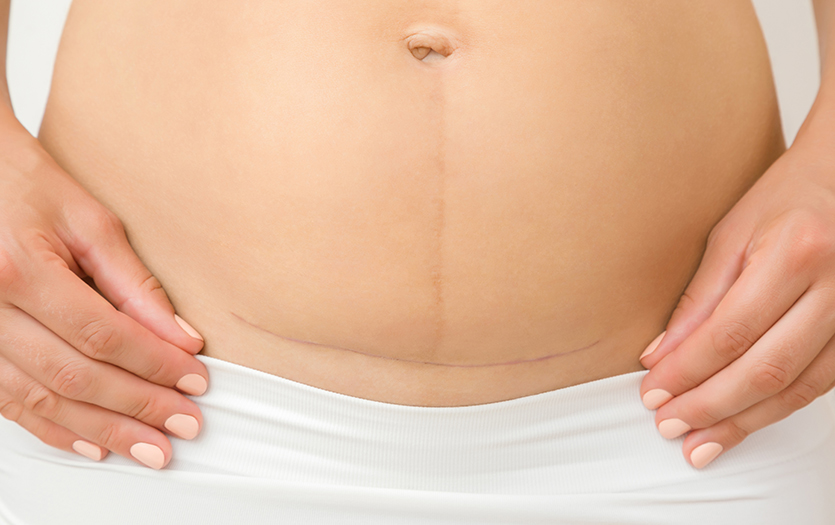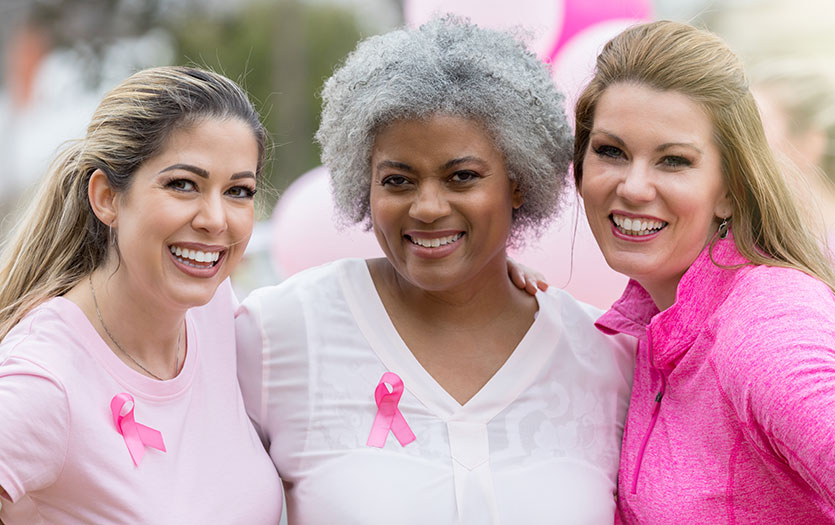
This post was written by Bridget Hurry, MD, OB/GYN Hospital Medicine.
A Cesarean section, also known as a C-section, is the surgical delivery of a baby through an incision made in the mother’s abdomen and uterus. Because a C-section is considered major surgery, you’ll want to know the best way to care for yourself postpartum to ensure a healthy recovery following the procedure.
How long will it take to recover after a C-section?
The incisions from your C-section (external and internal) need a full six to eight weeks to heal. Certain postpartum conditions like diabetes or obesity can slow the healing process.
During the first six to eight weeks, you may feel fatigued and need to rest more often than expected, and it’s important to listen to your body. You’ll want to limit heavy lifting (no more than 25 pounds) and intense exercise during your healing interval. Light exercise like walking can be resumed about two weeks after your C-section. Because every patient is different, however, it’s best to have any increase in exercise cleared by your doctor.
It's also recommended that you do not get in a hot tub, bathtub, pool or other body of water for six weeks. You can take showers as needed.
What can I expect during your C-section recovery?
During your recovery from a C-section, you will likely experience pain in the region of your incision. The pain will be the most intense for the first two to three days after surgery but will be markedly improved after 10 to 14 days. You may also feel discomfort from uterine contractions or cramping, which may be intensified when breastfeeding. NSAIDs, such as ibuprofen, are a great way to combat this discomfort.
If you have a dressing or bandage on the incision, it’s important to follow your doctor’s postoperative instructions on how to care for the incision. Sutures used on a C-section scar will dissolve, while staples will need to be removed in the doctor’s office.
Are there ways to speed up the healing process?
There is no real way to "speed up" your healing process. However, there are some things you can do to ensure you heal properly.
- Do not push your body too far, too fast. This pertains to resuming exercise or lifting too early, or overexerting yourself.
- Keep the incision clean and dry to avoid postoperative infection.
- Ensure good hydration, balanced nutrition and allow yourself plenty of rest.
- If you are diabetic, keep tight control of blood sugars to support your natural healing process.
How can I care for my incision?
The most imperative way to care for your incision after a C-section is to keep it clean and dry. Not only will this help reduce the chance of inflammation or infection, but it could also help improve the aesthetic outcome of your incision. While showering, allow soapy water to run over the incision, but do not scrub the area. After a shower, it is important to pat the area dry. If sweat collects by the incision during the course of a day, you can place a maxi pad or dry washcloth over the incision to absorb perspiration. Be sure to change it if/when it becomes damp.
Many patients find additional comfort in the interval after a C-section when wearing an abdominal binder, which can help support the area and protect the incision. These are often provided by the hospital prior to your discharge.
When should I contact my doctor?
If you experience any of the following symptoms, you should contact your provider right away so he or she can ensure you’re getting the care you need:
- Fever
- Pus or an extended area of redness around the incision
- Vaginal bleeding that increases significantly from one day to the next
- Significant separation of the skin edges (if you can insert a finger-width into your abdominal incision)
After a C-section, it’s important to remember that your body has undergone major surgery. By taking the proper steps to care for yourself and your incision, you can help ensure a healthy recovery.
Check out: Postpartum care: Recovering after a vaginal delivery



